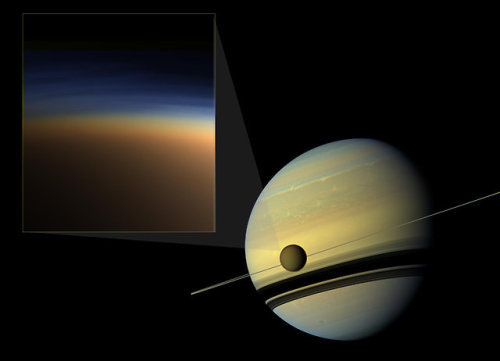#hydrocarbons
Saturn’s largest moon may hold key to cleaner engines
A new discovery on Titan’s haze is revealing new information about burning fuels on Earth.
Florida International University chemist Alexander Mebel and a team of international researchers have been studying Saturn’s largest moon, trying to unlock a mystery brewing beneath Titan’s thick, hazy atmosphere—How is it that dunes of hydrocarbons exist on the moon’s frozen surface?
On Earth, the kinds of hydrocarbons that cause soot are only known to occur during the combustion process under very high temperatures. They are the kinds of byproducts that engineers usually try to eliminate when engines burn fuel.
By examining data from NASA’s Cassini-Huygens probe, the researchers determined hydrocarbons can form the type of complex chains that create Titan’s orange-brown haze layers at temperatures as low as 90 degrees Kelvin, which is about -298 degrees Fahrenheit—that’s nearly 330 degrees below freezing on Earth.
Post link
New class of catalysts to transform cheap, widely available hydrocarbons into industrial molecules
Chemists at The University of Texas at Arlington are developing novel ways to use metal ions to activate simple hydrocarbons present in natural gas or petroleum products to produce more complex molecules valuable to the chemical and pharmaceutical industries.
The research also involves developing a new portable, easy-to-use sensor to detect the presence of some specific gaseous hydrocarbons in plant product storage facilities. Current technology is more complex, expensive and not portable.
“We want to develop a new class of catalysts to do difficult chemistry, like activating inert molecules and converting them to more useful products,” said Rasika Dias, UTA Distinguished Professor of Chemistry and Biochemistry and leader of the project. “Then we will study the properties of the reactive intermediates –— chemical substances produced during the conversion process, which usually involves a series of steps. Finally, we will also develop the new portable sensor for specific gaseous molecules like ethylene, which is a plant hormone, in a specific environment.”
Post link



